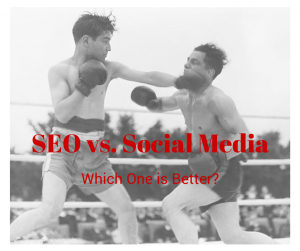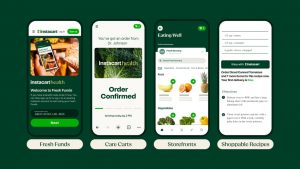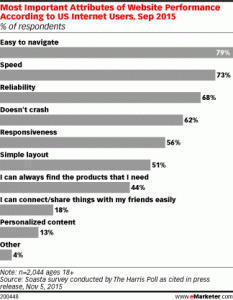The jockeying is on among leaders in a new B2B mega-category: revenue tech.

There’s a positioning battle going on across B2B sales, customer, data, and marketing technology providers. Aiming to organize these diverse B2B solutions into a mega-category — we’ll call it “revenue technology” — the race is on to develop more modern, effective systems to generate customers and manage revenue. And while no one system can do it all, it’s clear a big payoff is awaiting the providers who can get it right in this next B2B era.
Grab your popcorn and beverage of choice. This should be fun to watch. Well, not so much for the marketing, customer, sales, and operations execs who have to pick the right horse(s) to compete in today’s market while also placing bets on the future.
Today’s B2B marketing and sales tools are showing their age
Before we get into who is competing in this race, let’s talk about the “why” behind the positioning battle underway for the minds, hearts, and wallets of the B2B go-to-market (GTM) teams.
For the past handful of years, B2B teams have been trying to transition from generating volumes of leads to focusing on the buyer and account engagement that more effectively, efficiently, and predictably generates revenue and relationships.
Developed well over a decade ago, marketing automation platforms (MAPs) have been the system to help marketers generate leads to support sales. CRM has been the default system to manage customers and customer data, primarily with the lens of an internal sales process and management. A range of ABM tools have supported account engagement.
MAPs and CRMs, while workhorses, haven’t been entirely effective in enabling marketing and sales teams to execute the transition. And it’s even more true today as the buying-selling environment is quickly evolving, becoming far more dynamic and complex.
The B2B buyer-seller relationship makeover needs something different
Today, sales has less direct access to the B2B buyers and accounts they must identify, qualify, and win as customers. In fact, according to Gartner, B2B pros spend only 17% of their buying journey with vendor sales pros. And this is combined time — not just with the chosen vendor! This all translates into Marketing’s, Customer Success,’ and other functions’ requirement to play a larger, more initiative-taking role in the revenue- and customer-generation effort. Generating leads and supporting sales is not enough with today’s reality.
This means our customer, marketing, and sales systems of record the last decade-plus must do more. Consequently, there’s a huge opportunity for evolved types of systems (and set of providers) to play a bigger role. Many providers see these market shifts as an opportunity to broaden their product visions. Rather than developing systems for singular functions, they’re gearing up to become the B2B revenue system of record. In reality, and as we have learned in other technology markets, it will take five to seven years (or more) to develop technology that can support the evolving buyer- and account-centric approaches that today’s buyers demand. But the flag is up and the race is on.
Sizing Up the Race for the Next B2B Revenue Platform
The technology and platform options for B2B sales, marketing and customer pros are diverse. And as stated earlier no one solution can deliver what’s required today, nor in the future. But gaining an understanding of the different options and where they fit, both today and leaning forward, is essential for delivering on our customer- and revenue-generation mission.
Let’s take a look at the platforms vying for top billing in today’s B2B revenue stack. Note, this is a not a deep vendor-to-vendor comparison but a look across the B2B landscape to gain a sense of perspective. And we recognize more categories can be added to this positioning list. The mission here is to simply provide context of what’s happening in the market.
Lastly, this underlines the critical need to create and fund talent in the area of revenue and data operations (marketing, sales and customer success) — talent that can align technology, systems, data and processes with your revenue and business goals.
- Marketing Automation (MA) platforms. This large group of providers, who once were the center of B2B marketing stacks and demand gen marketing activity, have decreased in popularity. This is largely because their legacy lead-centric architecture doesn’t align well with the full customer lifecycle and prevailing account-centric requirements. In addition, with the acquisition of the major MA platforms by enterprise software players, namely Salesforce, Oracle, and Adobe, innovation has not kept pace with today’s rapidly changing needs discussed earlier in this article. Primary user = marketing.
- Account-Based Marketing (ABM) platforms. Because of the popularity of ABM, this category of providers is broad and deep. Vendors that play a role in developing and executing account-based strategies and campaigns are categorized into this group; in other words, most ABM solutions support only some individual elements of ABM strategies and, therefore, must be cobbled together with other systems and platforms. The providers include the predictive and intent solutions required for account-based GTM strategies, the original account-based advertising solutions providers, and the hundreds of providers that deliver account-based demand generation tools, campaigns, and data. Primary user = marketing with sales access.
- Customer Relationship Management (CRM) platforms. With deep roots in managing and tracking sales organizations and creating a single view of the customer, CRM is the sales system used by every B2B team today. Today, we have all-in-one CRM platforms (sales, marketing, customer success/service, data clouds, etc.) and industry-specific platforms that focus on the requirements and nuances of vertical markets. But like MAPs, those major players have consolidated the CRM category, hindering the innovation required to keep up with evolving strategies. This has opened the door and requirements for additional systems to play a role in revenue and customer generation. Primary user = sales with marketing and customer success.
- Sales Engagement platforms. Focused on solving the huge sales productivity challenge, sales engagement platforms work alongside existing CRM and email systems to streamline the ways sales communicates with prospects (email to voice to social, for example). The value and promise of these platforms are increased sales productivity via streamlined process, tracking and analysis to deliver more impact at a time when sales has less and less access to buyers. Primary user = sales.
- Customer Success (Management) platforms. These applications, with roots in the SaaS/subscription business environment, help customer success teams to manage existing customer relationships. The software relies on pulling data from other systems like email, CRM, live chat, product utilization, and customer satisfaction-scoring systems to understand a customer’s current status, adoption, and likelihood to churn or renew their agreement. The rise of these platforms is directly correlated to the need to increase customer stickiness and lifetime value (LTV). Primary user = customer success.
- Customer Data (CDP) platforms. According to the CDP Institute (yes, there is such a thing and it’s pretty informative), CDPs are “packaged software that creates a persistent, unified customer database that is accessible to other systems…It centralizes customer data from all sources and then makes this data available to other systems for marketing campaigns, customer service and all customer experience initiatives.” Primary users = marketing and data teams.
- Demand platforms. This is also a broad category, primarily made up of media, marketing services and demand gen providers who are developing technology to migrate from a services-based offering to a SaaS-based subscription model. They are offering some mix of SaaS-based tools, analytics, and data with the promise of making third-party demand gen more efficient, more effective, and more predictable. Primary user = marketing.
- Data and Intelligence platforms. There are hundreds of data providers, from sophisticated multi-billion organizations to niche solutions offering access to B2B data. These providers typically offer access to data sets, contact and account records for enhancement, and predictive and intent data with the promise of making data science teams more valuable, sales and marketing more productive, and customer and prospect campaigns more intelligent. Many of these providers also compile data from multiple sources and turn it into intelligence because most teams don’t have the time, resources, or talents in house. Primary users = marketing, sales, and data teams.
Understand the field before betting on the winner
2023 is just around the corner and the platform positioning and road maps are expanding rapidly. As you lock in your 2023 GTM strategies and business goals, now is the perfect time to take inventory of your systems and processes, identify your needs and gaps and understand the revenue technology landscape.
The good news is there are both incumbent and emerging options. The challenge in this positioning battle is understanding what’s right for your business, what’s real, and what’s next.
The post Get your front row seat for the race to be the B2B revenue platform of record appeared first on MarTech.
(21)









